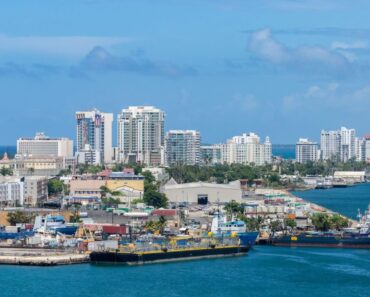This post was originally published on this site
https://fortune.com/img-assets/wp-content/uploads/2024/04/GettyImages-2032134542-e1712572272714.jpg?w=2048
A national fried chicken chain has devised a novel way to make its staff more efficient while on shift—redesign its restaurants so staff don’t have to walk as far to serve customers.
Pollo Campero, which operates in 20 states across the U.S., mapped how its staff moved around sites.
The Guatemalan-founded brand found its employees were walking miles a day and aimed to slash that figure, according to Bloomberg.
A staff member tasked with ensuring orders are delivered accurately and promptly, for example, previously walked about 18,000 steps a day, the equivalent of approximately five miles.
Following redesigns those individuals now walk around 9,500 steps per shift—a little over two miles—closer to the target of 10,000 steps most adults are told they should aim to walk a day.
According to the Mayo Clinic, the average American walks between 3,000 to 4,000 steps a day, and are advised to gradually increase that average over months if they aim to reach 10,000.
And while the news may be welcome to weary-footed staff, bosses at the chain made it clear the move was also motivated by the bottom line.
“Every step you save adds to the bottom line and saves labor costs,” Blas Escarcega, vice president of franchise development at Pollo Campero, told Bloomberg.
While the exact savings to the business can’t be calculated, he added, the reduction will also result in quicker service and pleased customers.
Rising labor costs
Labor costs are indeed creeping up—and will continue to do so—across the U.S. In California, for example, where Pollo Campero has more than 20 stores the minimum wage recently increased to $20 an hour.
While a victory for workers who have been paid historically low wages, economists are also warning the move could lead to unemployment with the cost of business being pushed too high.
California is just one of many states making a change. In Florida, where Pollo Campero has seven restaurants, the minimum wage will increase by $1 a year until 2026, when it will hit $15 an hour.
Rhode Island, where the brand also has a restaurant, will increase its minimum wage by $1 to $15 in January 2025.
New Jersey, home to four of the chicken brand’s restaurants, increased its minimum wage by $1 to $15.13 an hour in January.
In Maryland—where there are six Pollo restaurants—the minimum wage went up from $13.25 to $15.00 on January 1, 2024.
The 25% bump in California was reportedly described as “draconian” by an independent advocacy group of McDonald’s, named the National Owners Association (NOA).
Made up of more than 1,000 McDonald’s owners, the NOA claimed the move would cost each restaurant in California $250,000, a cost which “simply cannot be absorbed by the business model.”
Bosses at the fast food giant said on an earnings call in February they were going to have to “work through” the impact the raise would have on their margins.
Smaller businesses are also concerned.
Brian Hom, who owns two locations of Vitality Bowls in San Jose, told Fortune the minimum-wage mandate will cost him $100,000 across both of his stores. To offset wage increases, he’s increased store prices by 5%–10% and has stopped hiring new employees
On the flip side, the changes are a great relief to minimum wage workers who are suffering increased living costs, be it housing, groceries, or gas.
And with the base rate looking increasingly likely to stay at its highest rate in decades as the Fed attempts to push down inflation further, consumers can’t expect any relief there either.
Experts also argue businesses are overstating the impact such mandates will have.
For example, the Institute for Research on Labor and Employment at the University of California at Berkeley, found about one-third of minimum-wage jobs in California are already earning more than the state’s $16 per hour courtesy of city-led minimum wage initiatives.
Improving staff turnover
The change at Pollo Campero will also improve the staff’s work life, the company said. The brand told Bloomberg it hopes the new setup will improve worker experience and reduce turnover in an industry that typically has a high level of churn.
At a restaurant in Florida, for example, workers assembling meals for drive-thru customers stand on one side of a large island while staff preparing orders to eat in stand on the other—preventing the individuals from bumping into each other.
Extras like sauces and napkins are within easy reach, Bloomberg reports, and the store is 9% smaller than the brand’s average allowing for 10% less staff.
The streamlined kitchen has improved service time, added Escarcega, who said the company’s new aim is to clear dine-in customers within five minutes of walking through the door and drive-thru customers within three.
Pollo Campero was approached by Fortune for comment.





